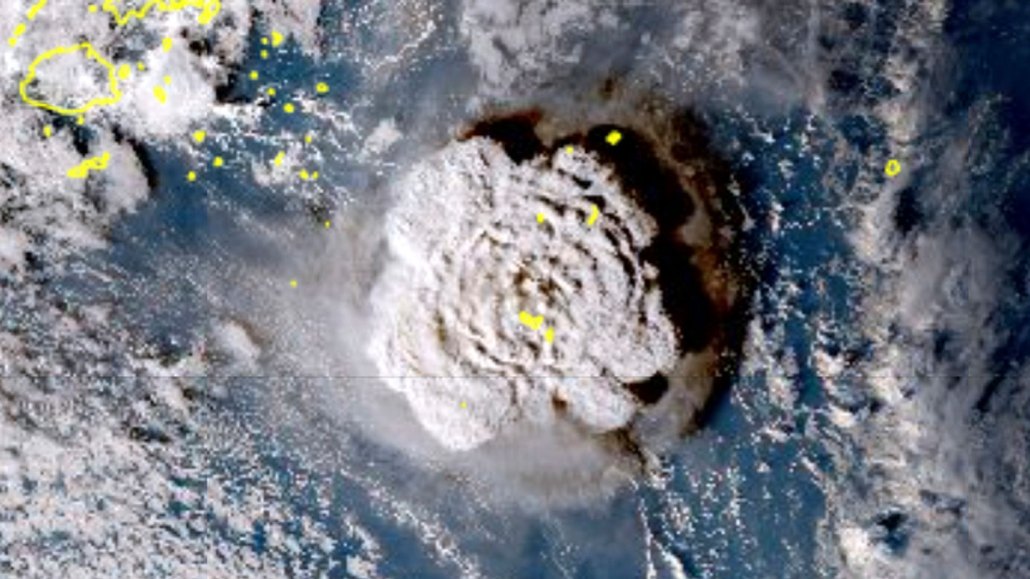The Hunga Tonga eruption sparked the highest-altitude lightning ever recorded
The plume from the 2022 eruption generated flashes up to 30 kilometers above sea level

The 2022 Hunga Tonga volcano eruption (shown in this image taken by a Japanese weather satellite) has added another superlative to its growing list of impressive stats: highest-altitude lightning flashes ever seen.
Japan Meteorology Agency via AP